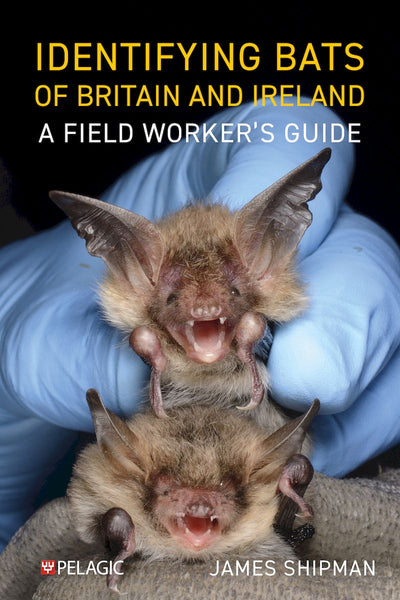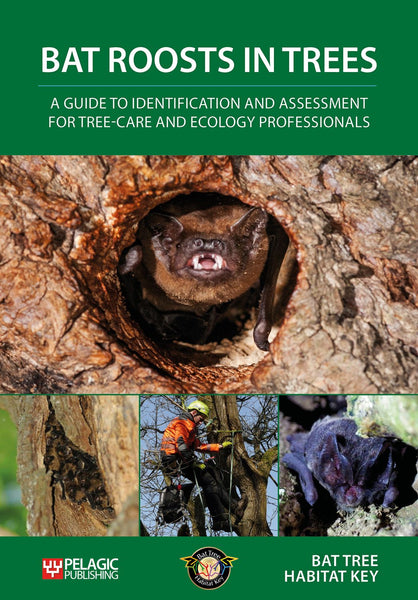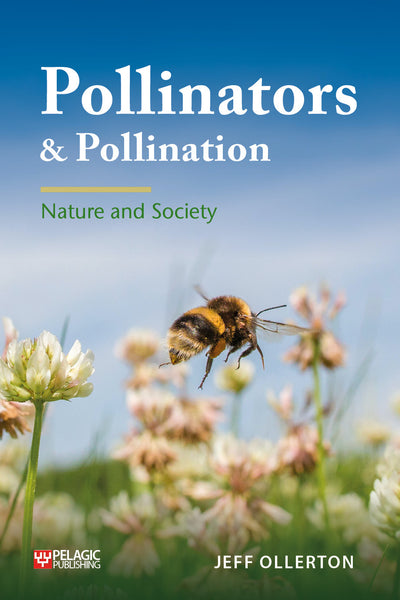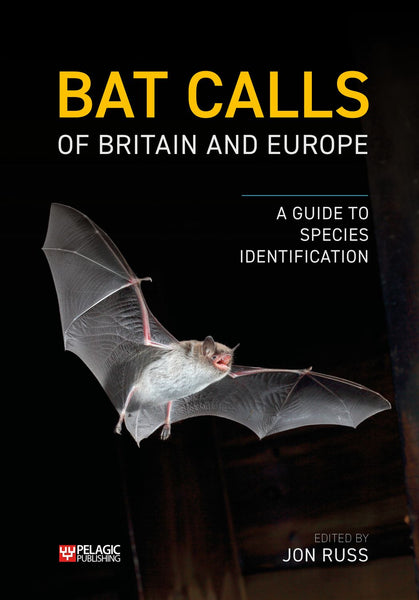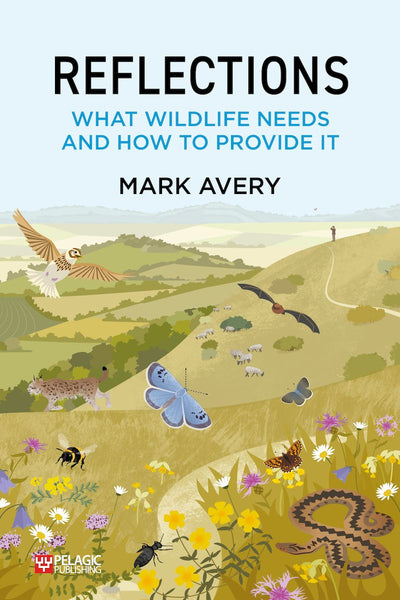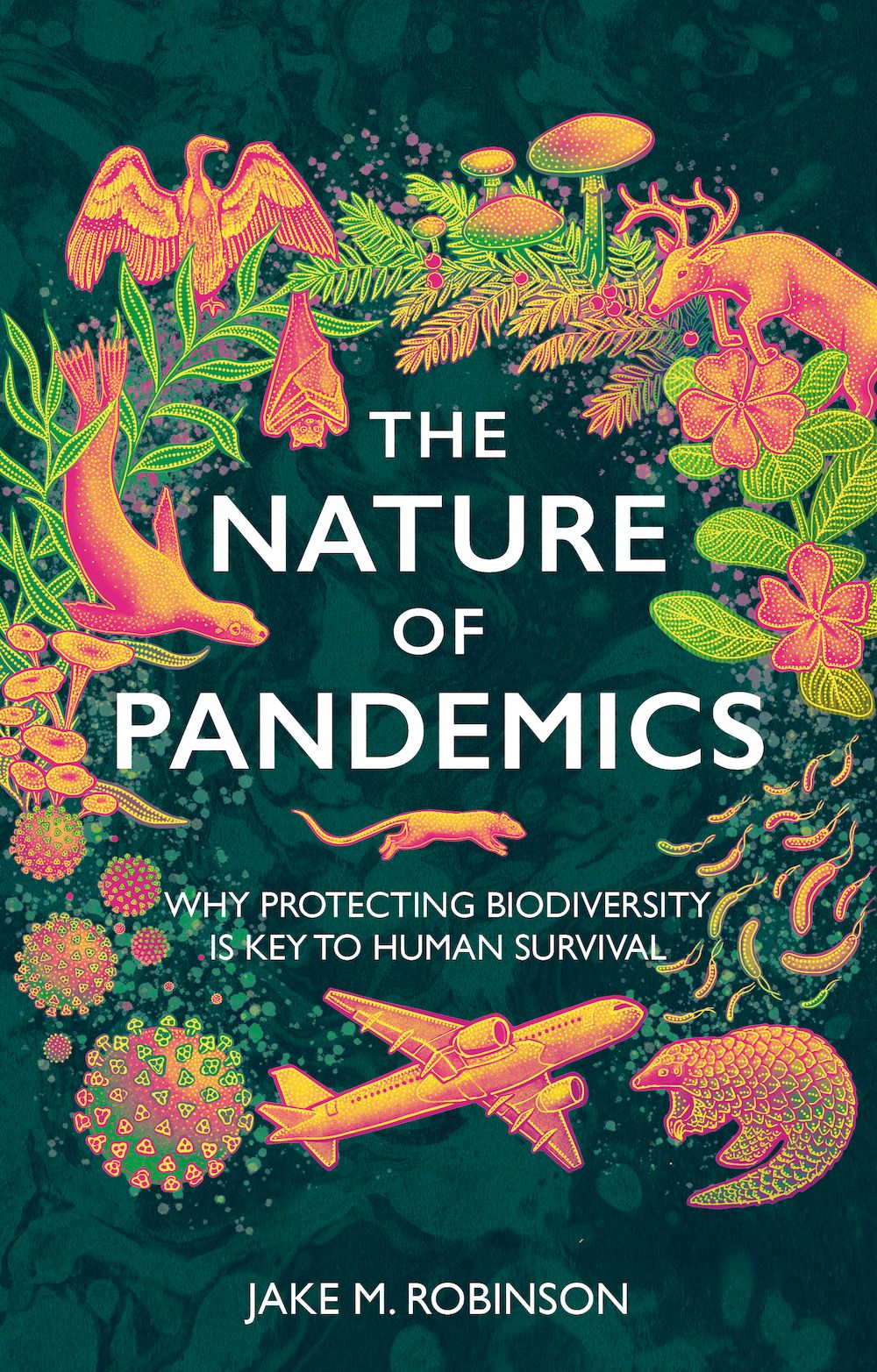
The Nature of Pandemics
Why Protecting Biodiversity is Key to Human Survival
- Identifies and evaluates the pathogens with the highest potential to trigger future human pandemics, considering their emergence, transmission pathways and global impact.
- Reframes pandemics as ecological crises that require ecological solutions.
- Blends historical case studies, real-world examples and expert interviews to make complex science accessible and engaging.
- One of the most important books I've ever read.
—Lucy Jones, journalist and author of Losing Eden
- disease
- ecology
- epidemiology
- health
- microbiology
- pandemic
- restoration
Description
When will the next pandemic arrive? For wildlife, it’s already here.
The Nature of Pandemics explores an unspoken truth: how our actions are driving wildlife pandemics across the world. Highlighting the interconnectedness of human, (non-human) animal and environmental health, it examines historical and contemporary pandemics and considers the importance of conservation and restoration efforts, presenting a compelling case for rethinking how we approach pandemic prevention.
This timely book reframes pandemics as ecological crises that require ecological solutions, unravelling the relationship between biodiversity, ecosystem health and pandemic risk. It reveals how climate change and human activities such as habitat destruction and the wildlife trade contribute to the emergence of infectious diseases, taking the reader through likely candidates for the next pandemic. An in-depth analysis of historical pandemics links past outbreaks, such as the bubonic plague in Eyam, to modern epidemiological challenges. The book also investigates human–wildlife conflict and social equity issues, demonstrating how deforestation and land-use change drive spillovers and how poorer communities disproportionately bear the brunt of outbreaks.
Pandemics pose an escalating global threat, their frequency increasing due to human-induced environmental changes. Prevention is not just down to medical preparedness but also about restoring and protecting biodiversity. By offering solutions such as green prescriptions, ecosystem restoration and sustainable policies, this book sets out an exciting interdisciplinary perspective that merges microbiology, ecology, epidemiology and restoration science.
DOI: 10.53061/LDYB5219
Table of Contents
Introduction: Invisible Foes, Planetary Woes
PART I. THE NATURE OF CONTAGION AND SHIFTING PERSPECTIVES
1. A Trip Down Spillover Lane
2. What Have Vultures Got to Do with It?
3. Why Bats Get Bad Press
4. Biodiversity and the Dilution Effect
PART II. WHICH PATHOGEN WILL CAUSE THE NEXT PANDEMIC?
5. Disease X – It’s Coming
6. Going Viral
7. Can We ESKAPE this Bacterial Blitzkrieg?
8. A Fungal Frenzy – Could This Be ‘The Last of Us’?
9. Protozoan Perils: Should We Eradicate Mosquitoes?
PART III. THE NEXT PANDEMIC? FOR WILDLIFE, IT’S ALREADY HERE
10. Ring-a-Ring o’ Roses and Bats with White Noses
11. The Devil’s Work
12. It’s Just the Flu, Right?
13. Spongy Brains and Zombie Deer – a Prion Predicament
14. Roots, ’Shrooms and Webs
PART IV. HOW DO WE ADDRESS THESE LOOMING THREATS?
15. One Health and Healing Nature
16. Green Prescriptions
17. Black-market Biodiversity
18. Sowing the Seeds of Change
19. Vaccinations for Humans and Wildlife?
20. Staying Ahead of the Curve
Conclusion: Looking Back, Moving Forward
Notes
References
Index
Reviews
- I loved this book! Timely and terrifying, if humans are to have any kind of future, it is imperative that we learn from our mistakes – and this book shows us exactly how.
—George McGavin, entomologist, broadcaster and President of the Dorset Wildlife Trust - Our relationship with nature has become warped. We cram sentient animals into industrial farms and wet markets, destroy habitats and misuse antibiotics and other chemicals. Clear-eyed and evidence-rich, The Nature of Pandemics lays bare the dangerous path we’re on, and how restoring nature, and our place within it, is key to making the world safer and healthier.
—Ben Goldsmith, environmentalist and author of God Is an Octopus - A riveting read! Robinson has provided an enthralling analysis concerning the relationship between nature, disease and human history. Ultimately, while nature has provided the pandemics, biodiversity will also provide the solutions and recovery.
—Prof. Chris Daniels DSc, author of Koala and A Guide to Urban Wildlife - Robinson elegantly weaves together science and history to explore how pandemics unfold and why our society is so vulnerable. But we are not helpless in the face of the inevitable - The Nature of Pandemics reveals powerful opportunities for change. I sincerely hope we listen.
—Dr Rebecca Nesbit, author of Tickets for the Ark - From the Midlands of England to Micronesia and from bats to bumblebees, Robinson takes the reader on a wild journey through time and space. He expertly weaves a web of gripping stories and brings to life the bigger picture of why pandemics are born, grow and how they can be stopped. With rigour, empathy and plenty of humour, Robinson untangles the complex relationship between ourselves and the ecosystems we inhabit, explaining what happens when things go out of kilter. This is interdisciplinary popular science writing at its finest!
— Dr Alexia Barrable, social science researcher and author of Growing Up Wild - Jake is a genius at communicating complexity. His work has fundamentally changed my worldview on health, humans, and nature and improved my clinical practice. Always engaging, The Nature of Pandemics highlights both the root causes of pandemics and the many positive and practical ways we can meet this challenge.
—Dr Aarti Bansal, GP and Co-Founder of Greener Practice - The Nature of Pandemics highlights more than ever that the longevity and health of humankind are inextricably linked to restoring and rewilding our ecosystems, to safeguarding and replenishing our biodiversity, to simply communing with nature’s greenspaces, and embracing the ideals of One Health. This book is highly recommended. Robinson’s gift is a persuasive, easy-to-read, science-based storytelling which is both enlightening and educational.
—Associate Professor Wayne Boardman, Wildlife Veterinarian and One Health expert - Robinson’s writing style is so engaging and captures complex ideas in a way that feels both clear and inspiring. The Nature of Pandemics is a powerful reminder that the health of people, wildlife, and ecosystems is inseparably intertwined. It reveals why protecting biodiversity is vital for planetary health, also serving as a preventive public health strategy.
—Dr Marja Roslund, Environmental Scientist - Fascinating, creative, readable, rigorous and compassionate, this is one of the most important books I've ever read. The Nature of Pandemics by Jake Robinson is an essential book for our time, and beautifully told. Robinson incisively analyses what is causing the problem, and offers hope and a remedy to solve it. Everyone - especially anyone in a position of power - should read this book.
—Lucy Jones, journalist and author of Losing Eden
About the Author
Jake M. Robinson is a microbial and restoration ecologist currently living in Australia. He earned a PhD in the environment-microbiome-health axis at the University of Sheffield, UK. His research interests span microbes, ecosystems, social equity issues and strategies to conserve and restore nature. Jake is a core member of the UNFCCC think tank, Resilience Frontiers, specialising in biodiversity–health connections.The Nature of Pandemics: Why Protecting Biodiversity is Key to Human Survival is Jake’s third book.
Bibliographic Information
 336 pages
336 pages - 38 black & white illustrations
- BISAC SCI088000, MED078000, NAT010000, MED022090
- BIC RNCB, MBN, MJCJ, RNT

















